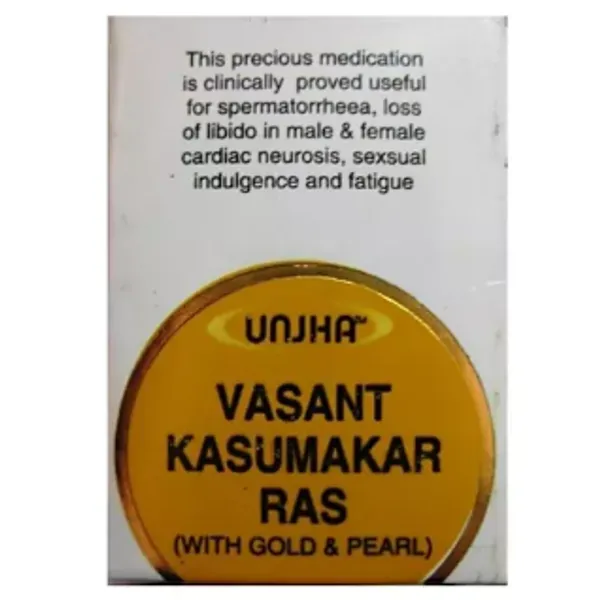Nirgundi oil, derived from the leaves and seeds of the Vitex negundo plant, has been a cornerstone in traditional medicine for centuries. Revered for its therapeutic properties, this ancient elixir has garnered attention for its multifaceted benefits in wellness and health. In this article, we delve into the rich history, scientific backing, and practical uses of Nirgundi oil, shedding light on how this time-honored remedy continues to be relevant in modern self-care practices.
Key Takeaways
- Nirgundi oil’s historical roots in Ayurveda highlight its longstanding reputation as a versatile healing agent.
- Scientific research has identified active compounds in Nirgundi oil that contribute to its anti-inflammatory and analgesic properties.
- It offers a plethora of health benefits, including pain relief, enhanced respiratory function, and improved skin health.
- Incorporating Nirgundi oil into daily routines can be simple, with various methods of application and potential synergies with other natural remedies.
- Sustainable and ethical sourcing of Nirgundi oil is crucial for preserving its medicinal qualities and supporting the ecosystems and communities involved in its production.
Unveiling Nirgundi Oil: A Historical Perspective
Origins and Traditional Uses
Nirgundi oil, derived from the Vitex negundo plant, has been a cornerstone in traditional medicine for centuries. Its roots trace back to ancient civilizations, where it was extensively used for its medicinal properties. The oil was traditionally employed as a nervine tonic, tranquilizer, and vermifuge, indicating its diverse applications in health and wellness.
The versatility of Nirgundi oil in traditional practices underscores its significance in holistic healing.
In various cultures, the leaves, seeds, and roots of the plant were utilized in different forms, such as poultices, decoctions, and oils, to treat a myriad of ailments. The following list highlights some of the traditional uses of Nirgundi oil:
- Alleviating joint pain and inflammation
- Treating respiratory conditions
- Reducing fever and headaches
- Managing digestive issues
This historical reliance on Nirgundi oil showcases not only its therapeutic potential but also the wisdom of ancient health practices.
Cultural Significance in Ayurveda
Nirgundi oil, known in Sanskrit as Nirguṇḍī, holds a revered place in the ancient practice of Ayurveda. Its multifaceted applications range from pain management to detoxification, reflecting its deep-rooted significance in holistic healing. The oil is celebrated for its ability to balance the doshas—particularly pacifying kapha and vāta—and is a common ingredient in numerous Ayurvedic formulations.
Nirgundi oil’s integration into daily wellness routines exemplifies the Ayurvedic principle of harmony between body, mind, and environment.
Traditionally, practitioners of Ayurveda have utilized nirgundi oil in various therapeutic contexts, such as:
- Alleviating joint and muscle pain
- Treating respiratory conditions
- Enhancing skin health
- Combating stress and anxiety
This esteemed oil continues to be a cornerstone in Ayurvedic medicine, symbolizing a legacy of natural well-being that transcends generations.
Historical Extraction Methods
The extraction of Nirgundi oil in ancient times was a meticulous process that reflected the deep connection between nature and healing practices. The primary process involved boiling or crushing the Nirgundi leaves to release their potent oils. This method ensured that the essential compounds were preserved, maximizing the therapeutic potential of the oil.
Extraction techniques varied slightly from region to region, but the underlying principles remained consistent. Traditional healers would often use simple tools and adhere to specific rituals believed to enhance the oil’s efficacy.
- Harvesting of Nirgundi leaves during specific lunar phases
- Boiling the leaves in water or pressing them to extract the juice
- Filtering the extract to obtain a pure form of the oil
- Storing the oil in clay pots to maintain its potency
The careful selection of leaves and adherence to time-honored extraction methods were crucial in obtaining high-quality Nirgundi oil. These practices have been passed down through generations, underscoring the oil’s enduring legacy in wellness traditions.
The Science Behind Nirgundi Oil
Active Compounds and Their Properties
Nirgundi oil is rich in a variety of bioactive compounds that contribute to its therapeutic potential. The primary active constituents include flavonoids, terpenoids, and glycosides, each playing a pivotal role in the oil’s medicinal properties.
Flavonoids, for instance, are known for their antioxidant and anti-inflammatory effects, which can help in mitigating oxidative stress and reducing inflammation. Terpenoids contribute to the oil’s distinctive aroma and also possess anti-microbial and analgesic properties. Glycosides have been linked to supporting heart health and improving circulation.
The synergy between these compounds is believed to enhance the overall efficacy of nirgundi oil, making it a potent remedy for various ailments.
Here is a list of some key active compounds found in nirgundi oil and their notable properties:
- Nishindine: Anticonvulsant, aids in nerve function
- Aucubin: Hepatoprotective, promotes liver health
- Agunilone: Anti-inflammatory, reduces pain and swelling
Understanding these compounds and their properties helps in appreciating the scientific basis for the traditional uses of nirgundi oil.
Research Studies on Therapeutic Effects
A plethora of research studies have been conducted to validate the therapeutic effects of Nirgundi oil. The consensus is clear: the oil possesses a range of medicinal properties that can alleviate various health conditions. One study highlighted its efficacy in reducing symptoms of arthritis, while another explored its potential to improve cognitive functions.
Research has also delved into the oil’s antimicrobial and antifungal activities, demonstrating its ability to fight infections. A notable investigation into its analgesic properties revealed significant pain reduction in subjects.
The findings from these studies not only confirm the anecdotal benefits of Nirgundi oil but also open up new avenues for its application in modern medicine.
While the research is promising, it is crucial to note that most studies are preliminary and further investigation is needed to fully understand the oil’s capabilities. Future research should explore long-term effects, benefits for skin conditions, and combination with other products. Innovations in formulation and delivery methods are recommended for efficacy.
Comparative Analysis with Other Herbal Oils
Nirgundi oil, with its unique profile of phytochemicals, stands out among a plethora of herbal oils used in traditional medicine. The efficacy of Nirgundi oil in treating various ailments is often compared to other well-known oils such as eucalyptus, lavender, and tea tree oil. While each oil has its own set of benefits, Nirgundi is particularly noted for its versatility in Ayurvedic treatments.
Nirgundi oil’s broad spectrum of therapeutic effects makes it a valuable addition to any natural wellness regimen.
When considering the use of herbal oils, it’s important to understand their individual properties and how they can complement each other. Below is a list of common herbal oils and their primary uses:
- Eucalyptus Oil: Known for its respiratory benefits.
- Lavender Oil: Widely used for its calming and sleep-inducing effects.
- Tea Tree Oil: Often applied for its antiseptic properties.
- Peppermint Oil: Used for digestive issues and headache relief.
Nirgundi oil’s ability to alleviate back pain and support skin health aligns with the therapeutic effects of these oils, yet it also offers unique advantages such as its application in hemorrhoid relief and its role in enhancing gut health.
Health Benefits of Nirgundi Oil
Pain Relief and Anti-Inflammatory Actions
Nirgundi oil is renowned for its potent pain-relieving and anti-inflammatory properties. Traditional practitioners have long recommended it for alleviating various forms of discomfort, including joint pain and muscle soreness. The oil’s effectiveness is attributed to its phytoconstituents, which exhibit significant therapeutic actions.
- Relief from arthritis and rheumatism
- Reduction in muscle spasms
- Alleviation of menstrual cramps
Nirgundi oil’s ability to penetrate the skin allows for quick action, offering relief where it’s most needed.
Regular application of nirgundi oil can lead to improved mobility and a better quality of life for individuals suffering from chronic pain conditions. It’s important to note that while nirgundi oil can be a powerful aid, it should be used as part of a comprehensive wellness plan.
Respiratory Health and Immunity Boosting
Nirgundi oil has been traditionally used to support respiratory health, with its users often reporting a sensation of clearer breathing passages and reduced congestion. The oil’s natural compounds are believed to strengthen the immune system, helping the body to fend off common colds and respiratory infections.
Vitex negundo, the plant from which nirgundi oil is extracted, contains various bioactive compounds that have been studied for their immunomodulatory effects. These compounds can help modulate the body’s immune response, potentially leading to improved resistance against pathogens.
Regular use of nirgundi oil may contribute to a more robust immune system and better respiratory health, making it a valuable addition to one’s wellness routine.
- Enhances natural immunity
- Alleviates symptoms of cold and cough
- Reduces nasal congestion
- Supports overall respiratory function
Skin Care and Healing Properties
Nirgundi oil is renowned for its remarkable skin care and healing properties. The oil’s ability to enhance skin health and accelerate wound healing has made it a cherished remedy in traditional medicine. Its application ranges from treating skin infections to reducing signs of aging.
- Soothes skin irritations and rashes
- Promotes faster healing of cuts and wounds
- Acts as a natural moisturizer for dry skin
Nirgundi oil’s antiseptic and anti-inflammatory qualities make it an excellent choice for maintaining skin integrity and preventing infections. Regular use can lead to healthier, more resilient skin.
While nirgundi oil offers a plethora of benefits for the skin, it is also important to consider its compatibility with your skin type and any potential allergies. Consulting with a healthcare provider before use can ensure safe and effective application.
Incorporating Nirgundi Oil into Daily Life
Methods of Application and Dosage
Nirgundi oil can be incorporated into your wellness routine in various ways, each with its own recommended dosage. Topical application is common for joint pain and skin conditions; a few drops massaged into the affected area twice daily is typically sufficient. For respiratory issues, inhalation of the oil’s vapor may provide relief. Add 2-3 drops to steaming water and inhale the steam for a few minutes.
When using nirgundi oil, it’s important to consider the concentration of the oil and any carrier oils used. Here’s a simple guide to help you get started:
- Topical Use: Dilute 5-10 drops in 10ml of carrier oil
- Inhalation: 2-3 drops in steaming water
- Bath: Add 8-10 drops to a warm bath
Remember, it’s essential to perform a patch test before using nirgundi oil extensively to ensure you do not have an allergic reaction.
While exploring the benefits of traditional Ayurvedic remedies, consider incorporating nirgundi oil as part of a holistic approach to health. It can be used in conjunction with other herbal remedies for enhanced well-being.
Synergistic Effects with Other Natural Remedies
Nirgundi oil, when used in conjunction with other natural remedies, can enhance overall wellness. Combining Nirgundi oil with Vara Churna, for instance, may offer a comprehensive approach to digestive health. Vara Churna is known for its effectiveness in rectifying constipation, improving blood circulation, and supporting liver function.
The synergistic use of Nirgundi oil with other herbal formulations can lead to a balanced approach to health, addressing multiple concerns simultaneously.
Here is a list of natural remedies that work well with Nirgundi oil:
- Turmeric: for its anti-inflammatory and antioxidant properties
- Ashwagandha: to help reduce stress and anxiety
- Triphala: for its detoxifying and rejuvenative effects
By integrating Nirgundi oil into a holistic health regimen, one can leverage its therapeutic benefits while also taking advantage of the healing properties of other herbs.
Precautions and Best Practices
While Nirgundi oil is celebrated for its therapeutic benefits, it is crucial to approach its use with caution to avoid potential adverse effects. Always conduct a patch test before applying the oil extensively to ensure you do not have an allergic reaction.
When using Nirgundi oil, start with small doses and gradually increase as needed, paying close attention to your body’s responses.
It is also important to consider the purity of the oil. Adulterated or improperly processed oils can lead to unintended consequences. Here is a simple checklist to follow:
- Verify the source of the Nirgundi oil.
- Check for any additives or preservatives.
- Ensure the oil is stored in a cool, dark place to maintain its potency.
Lastly, while Nirgundi oil can be a powerful natural remedy, it should not replace professional medical advice. If you are pregnant, breastfeeding, or have a chronic health condition, consult with a healthcare professional before incorporating Nirgundi oil into your wellness routine. Remember that natural remedies like Chyawanprash and Nirgundi oil offer various health benefits, but choosing high-quality brands and consulting a healthcare professional before use is essential.
Sustainability and Ethical Sourcing of Nirgundi Oil
Impact on Local Communities
The production of Nirgundi oil has a profound impact on local communities, often serving as a critical source of income for small-scale farmers and producers. Sustainable harvesting practices ensure that these communities can benefit from the plant without depleting local resources.
Economic empowerment is not the only advantage; there’s also a transfer of traditional knowledge as older generations teach the younger the intricacies of Nirgundi cultivation and oil extraction. This cultural exchange helps to preserve the heritage associated with this ancient remedy.
The cultivation of Nirgundi contributes to the social and economic fabric of rural areas, fostering community cohesion and resilience.
While the benefits are significant, it is crucial to monitor the industry to prevent exploitation and ensure fair compensation for the labor involved. The following points highlight key considerations:
- Ensuring fair trade practices are in place
- Providing education and resources for sustainable farming
- Supporting infrastructure that aids in efficient production and distribution
Environmental Considerations
The cultivation and production of Nirgundi oil must be approached with environmental stewardship to ensure that the ecological balance is maintained. Sustainable farming practices are essential to preserve soil health and biodiversity. The use of organic fertilizers and pest management strategies can minimize the environmental footprint of Nirgundi oil production.
Environmental impact assessments are crucial in identifying potential negative effects on the ecosystem. These assessments guide producers in implementing measures that protect local flora and fauna, including the Nirgundi plant itself. The following points highlight key environmental considerations:
- Reduction of chemical inputs to prevent soil and water contamination
- Conservation of water resources through efficient irrigation
- Protection of natural habitats and wildlife
- Responsible waste management, including the recycling of used oil
It is imperative that the production of Nirgundi oil aligns with eco-friendly practices to safeguard the environment for future generations.
Ensuring Quality and Purity in Production
The production of Nirgundi oil must adhere to stringent quality control measures to ensure that the final product is both pure and potent. Ensuring the purity of Nirgundi oil is crucial, as it directly impacts the oil’s therapeutic efficacy. Manufacturers must implement a series of checks and balances throughout the production process, from the selection of raw materials to the final packaging.
Certification by recognized bodies can serve as a testament to the oil’s quality. This includes Good Manufacturing Practices (GMP) certification, organic certification, and third-party testing for contaminants. A transparent supply chain is also essential for maintaining the integrity of the oil.
- Selection of high-quality Nirgundi leaves
- Use of clean, non-toxic solvents in extraction
- Rigorous testing for heavy metals and pesticides
- Adherence to traditional extraction methods
By prioritizing quality and purity at every step, producers of Nirgundi oil can deliver a product that is not only effective but also safe for consumers. This commitment to excellence helps maintain the trust and satisfaction of those seeking the holistic health benefits that Ayurvedic products offer.
At the heart of our commitment to holistic wellness is the sustainability and ethical sourcing of Nirgundi oil, a cornerstone of Ayurvedic medicine. We ensure that every drop of Nirgundi oil you purchase from us supports environmental stewardship and fair labor practices. Embrace the power of nature with our pure, responsibly sourced Nirgundi oil. Visit our website to explore our range of Ayurvedic remedies and take a step towards a more balanced and healthy lifestyle.
Conclusion
In conclusion, Nirgundi oil emerges as a remarkable elixir from the annals of ancient wellness practices, offering a plethora of health benefits that are both diverse and profound. From its anti-inflammatory properties to its ability to alleviate pain, improve skin health, and even potentially support mental well-being, this oil has demonstrated its value across various aspects of health and medicine. While modern science continues to explore and validate the claims of traditional medicine, the enduring legacy of Nirgundi oil serves as a testament to the wisdom of our ancestors. Embracing such natural remedies can be a step towards holistic health, complementing modern therapies with the age-old secrets of nature’s pharmacy.
Frequently Asked Questions
What is Nirgundi oil and where does it come from?
Nirgundi oil is a herbal oil extracted from the leaves, seeds, or roots of the Nirgundi plant, also known as Vitex negundo. It is traditionally used in Ayurvedic medicine and has a history of use in various cultures for its medicinal properties.
What are the main health benefits of using Nirgundi oil?
Nirgundi oil is known for its pain relief and anti-inflammatory properties, making it beneficial for joint and muscle pain. It also supports respiratory health, boosts immunity, and aids in skin care and healing.
How is Nirgundi oil used in Ayurveda?
In Ayurveda, Nirgundi oil is used to balance the doshas (body energies) and treat a variety of ailments. It is often applied topically for its therapeutic effects and can also be used in massages and other Ayurvedic treatments.
Can Nirgundi oil be compared to other herbal oils?
Yes, Nirgundi oil can be compared to other herbal oils in terms of its active compounds and therapeutic effects. Research studies often explore the comparative effectiveness of herbal oils, highlighting the unique benefits of Nirgundi oil.
Are there any precautions to take when using Nirgundi oil?
Yes, it is important to follow proper dosage and application methods when using Nirgundi oil. People with allergies or sensitive skin should perform a patch test before use, and pregnant or nursing women should consult a healthcare professional before use.
How can I ensure the Nirgundi oil I purchase is sustainably sourced and ethically produced?
Look for certifications and information on the sourcing and production practices of the Nirgundi oil you purchase. Choose products from companies that are transparent about their impact on local communities and the environment, and prioritize quality and purity.











